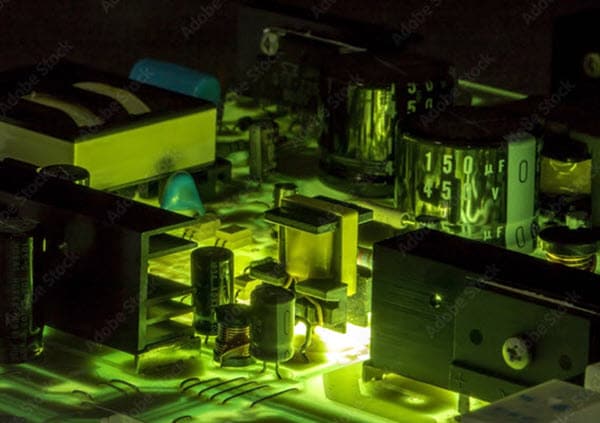What good is renewable energy if we cannot count on it?
Integrating renewable energy sources can reduce emissions through a higher fraction of green energy, improve asset utilization, and add resiliency and reliability to energy production. But society will need multiple sources to deliver consistent, high-quality, cost-effective power. Examples of these sources include known renewables like wind, solar, photovoltaics, fuel cells, and batteries, emerging technologies like industrial-size green hydrogen fuel cells, and creative uses for electric vehicles like vehicle-to-grid (V2G), solar charging, and charging lanes on the road.
Many energy technology providers claim their solution is the definitive answer for renewable energy. But the seamless integration of all these energy sources will enable practical, widespread green energy. Moreover, with an increasing emphasis on maximizing resources to produce more energy with less input, efficiency is a critical performance measure for any form of energy production. This posting will review three pathways for power integration that enable efficient renewable power: high voltage DC, AC to DC, and DC to DC conversion, followed by expanded power transmission and distribution infrastructure.
High Voltage DC (HVDC)
Tesla’s AC power won out over Edison’s DC approach due to AC transformers adding the ability to modify voltage to minimize (but not eliminate) transmission loss. This feature made AC ideal for distributed power. However, with the shift to renewable energy—a DC power source—some of the features of AC no longer hold an advantage. In addition, engineers have leveraged advanced semiconductors and developed new conversion approaches to make DC a legitimate option to integrate renewable power.
While AC enables voltage step-downs for distributed power, it also requires source synchronization to match the frequency of the power sources. In addition, the exploding numbers of smart devices requiring an increasing amount of DC power reduce the overall efficiency of AC power, as it must convert to DC at the point of use. Though AC to DC conversion is relatively efficient with >90 percent efficiency possible, more conversion steps mean more overall loss in total.
As more DC power devices permeate the market, increasing the voltage can deliver power in the state the application needs. And along with the advantages of improved control, conversion, and transmission loss, HVDC integrates renewable energy from wind, solar, and other renewable sources for improved energy efficiency over large distances.
It will be necessary for city planners to consider grid power loads with more EVs coming online to meet the demand for local high-voltage charging. In addition, high-voltage applications carry higher temperatures. As a result, engineers have developed technology improvements like silicon carbide (SiC) MOSFETs and advanced IGBTs to withstand heat dissipation from fast charging, minimizing heat loss to raise efficiency. As a result, HVDC is an enabling technology for Level 3 DC fast charging, critical to bringing the “refueling” experience closer to parity for drivers.
Bi-directional AC-DC and DC-DC Conversion
AC to DC conversion
While the IoT is increasing DC power’s popularity, the high majority of distributed power still employs high-voltage AC (HVAC). Integrating renewable DC power with existing AC grid power is crucial to supporting demand, adding resilience, and reducing emissions. Therefore, opening pathways for the grid to feed and draw from renewable sources (and vice versa) is a significant aim of power integration.
Because renewable power and electronic devices run on DC, converting AC to DC is critical to integrating renewable power into the IoT landscape. In addition, DC is also more efficient, so as long as the conversion loss does not overtake the efficiency gain, energy efficiency experiences a net positive outcome with AC to DC conversion. This power integration technology can convert power between AC and DC to smooth demand peaks and dampen intermittent output from renewable sources.
Vehicle to grid (V2G) is another highly disruptive energy efficiency-improving application enabled by bidirectional AC-DC conversion. Leveraging DC battery power from EVs for grid power resiliency and charge-sharing is a significant step toward extending the energy output because the conversion step is the limiting factor for energy efficiency.
DC to DC conversion
DC to DC is critical when integrating power between multi-voltage sources for electric vehicles. An example of a DC-DC application is a dual-voltage (12V and 48V) EV battery architecture. Bi-directional DC-DC converters can transfer power between the batteries, enabling smaller capacities with higher efficiency. In addition to the improved efficiency from optimized sizes, system manufacturers can realize lower costs with improved reliability at the same time.
Transmission and Distribution Infrastructure
Delaying infrastructure updates and improvements creates a significant hidden source of energy efficiency erosion. Legacy equipment, locations, transmission run lengths, and distribution pathways all influence how efficiently collected renewable energy can integrate with existing grid power.
With the increase in peak power created by more EVs described above, simply shoving more energy demand onto the existing infrastructure will lead to overloads and outages. Creating and evolving the existing infrastructure to maximize the efficiency of new renewable energy sources and transmission modes can have a profound effect.
While it is tempting to rush to expand the highest-efficiency technology (that we know today), shutdowns and restarts of the grid carry substantial efficiency loss and reduce the ability to be resilient. Instead, the infrastructure should optimize the transmission and distribution of diverse energy sources to reduce peak demand, smooth intermittencies from renewable sources, and absorb increased loads from EV charging.
Conclusion
The highest-loss link in the generation, transmission, distribution, and application in its lifecycle limits energy efficiency. HVDC, bi-directional conversion of both AC-DC and DC-DC, and improvements to infrastructure address efficiency in the first three of those steps while device and end-use manufacturers address the fourth. Effectively integrating the various power sources achieves improved efficiency.
But there are numerous additional benefits to pursuing energy efficiency than just the critical climate benefit through improved power integration. For example, decreasing energy cost, increasing resiliency, and improving local air quality result from moving away from ~25-30 per cent efficient carbon energy and toward an optimized, renewable energy-integrated framework.
Article Courtesy: Mouser Electronics








